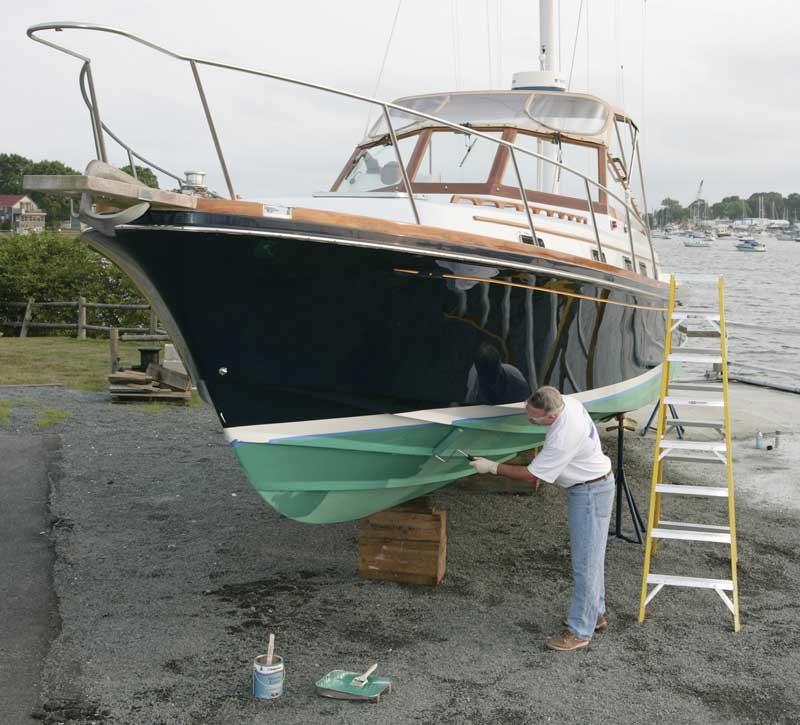Even the thought of bottom paint can be a daunting task for many boat owners. But with spring commissioning right around the corner, it’s a task that needs considering. The best bottom paint for your boat depends on how and where you will use it, and the type of boat that you have.

Types of Bottom Paint
Antifouling paint works to keep your hull clean by preventing marine organisms from adhering to your hull. According to West Marine, generally softer paints can be applied over hard paints, but not vice-versa, and vinyl paints should only be applied over vinyl paints. If you have questions, it’s best to consult a paint compatibility chart.
Copolymer Ablative Paint
These paints release their biocide at a constantly controlled rate as they wear away or “ablate.” This reduces paint build-up and the need for sanding at haulouts. Another benefit is that these paints do not lose their antifouling ability when exposed to air, which means that prior to winter storage, you can paint your boat and be ready to launch in the spring. Ablative paints also have less copper than modified epoxy paints.
Hard Modified Epoxy Paint
Hard modified epoxy paint prevents growth by leaching biocides upon contact with the water. The biocide is released at a steadily decreasing rate, leaving a hard coating of the original thickness at season’s end. These paints adhere to most surfaces, are more abrasion resistant, and can be applied over most types of paint, according to West Marine. However, build-up will occur with each new coat of paint, and eventually your hull will need to have the coating stripped.
If you keep your boat in the water year-round, you’ll want a paint with a high-copper content. If you store your boat on land in the winter and don’t mind having to repaint in the spring, modified epoxy paints with a lower percentage of copper are a good economical choice.
Aluminum Safe Bottom Paints
Antifouling paint that contains cuprous oxide should never be applied to an aluminum hull or outdrive as it will cause galvanic corrosion. Instead, boaters should select an antifouling paint that contains cuprous thiocyanate, or a copper-free antifouling paint that uses non-metallic ECONEA as the biocide.
Thin Film Bottom Paints
These paints are a good choice for freshwater environments where algae is a concern. They offer a super-slick PTFE finish plus one or more biocides which keep growth from attaching to the hull. They dry almost instantly, so you can rapidly apply several coats and launch almost immediately.
Water Based Bottom Paints
Easier on the environment and on the person applying them. Cleans up easily with water and has little or no solvent smell.
Soft Sloughing Paints
Sloughing paints, like ablatives, wear away as a boat moves, so the more often the boat is used the faster it will go (and the quicker the paint wears off). These paints are very soft, so few paints can be applied over them.
Vinyl Paints
Vinyl-based paints are slick, hard paints popular among owners of performance boats as they provide a smooth surface. These paints can only be applied over existing vinyl paint, and their antifouling effectiveness is inferior compared to high-quality modified epoxies and ablatives.
For more information, West Marine's website and search ‘West Advisor’ for tips and expert advice on bottom painting.
For more tips on getting your boat ready for the season, check out our Spring Commissioning Checklist.